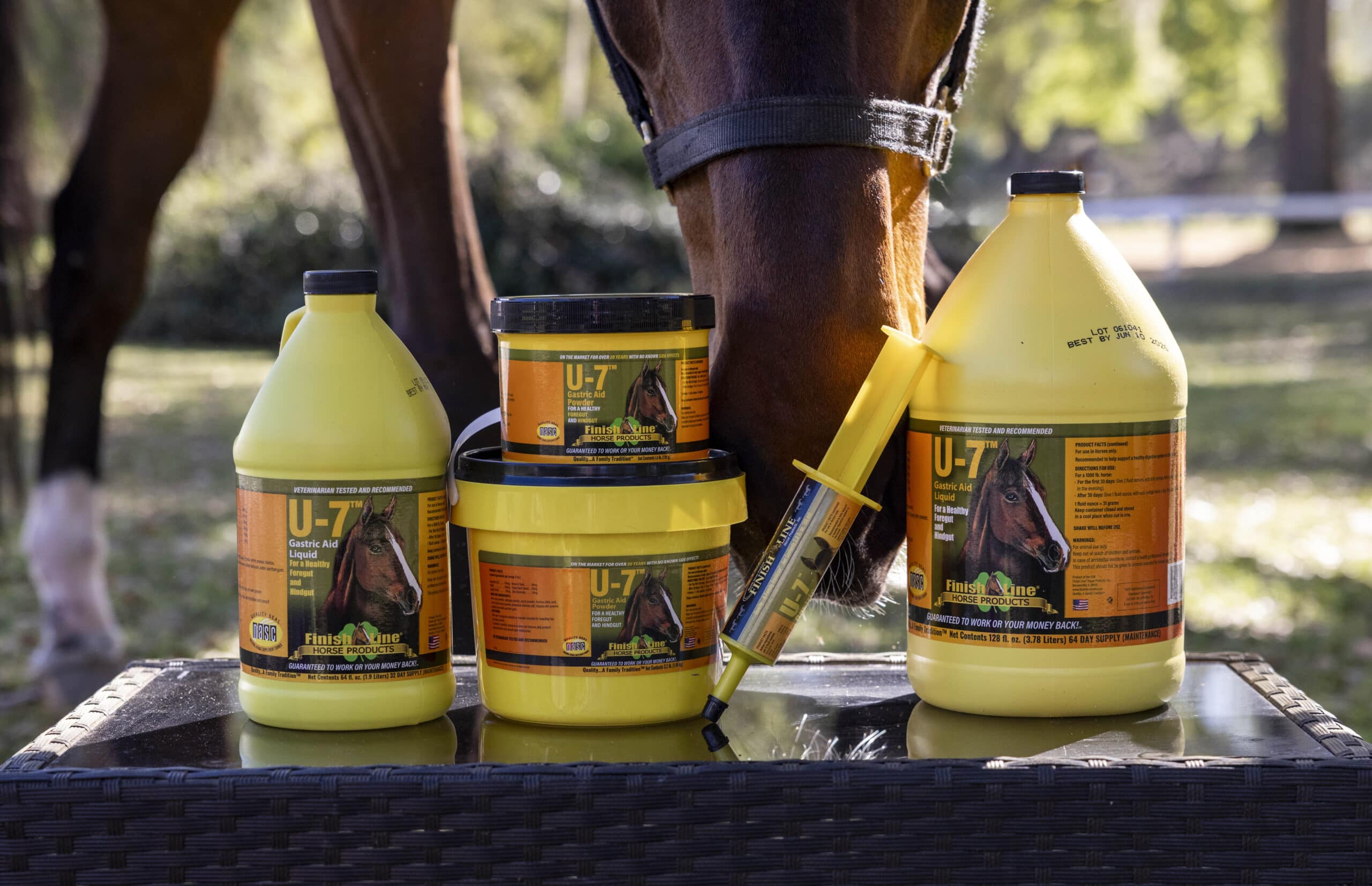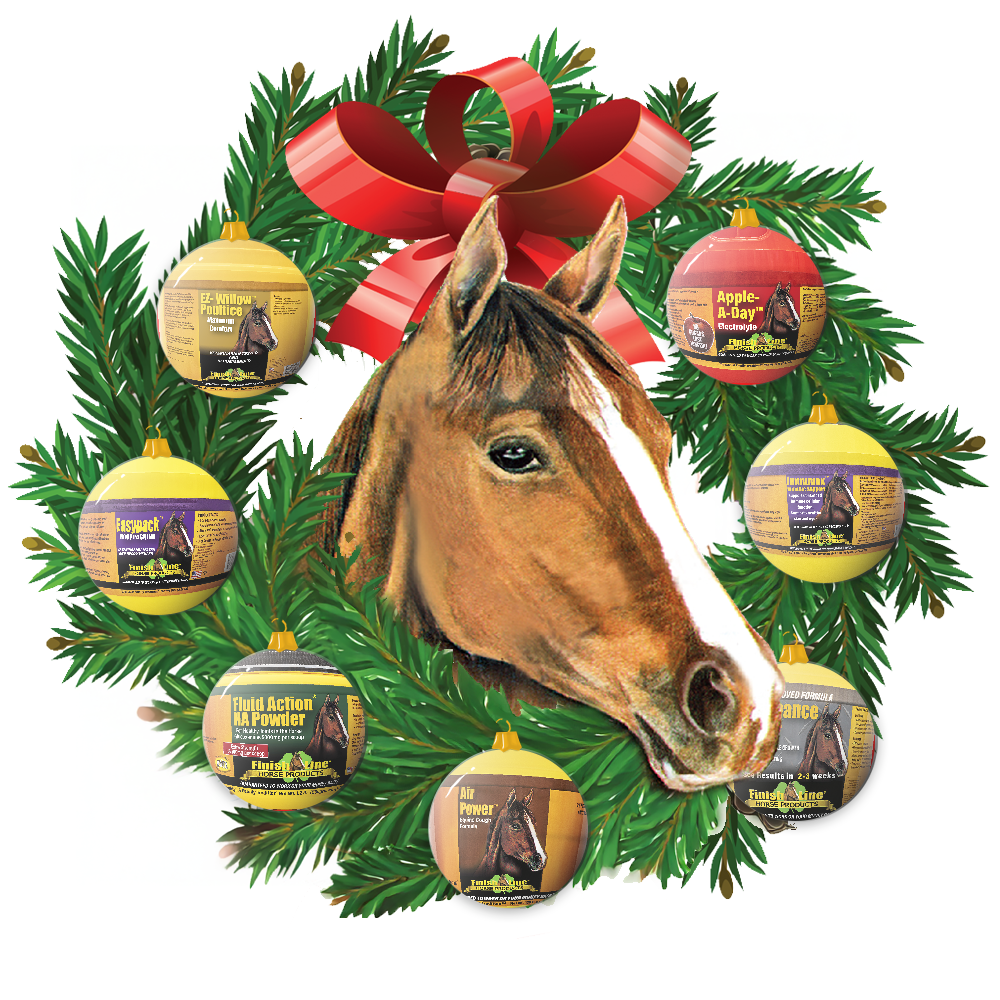To properly understand equine gastric ulcers, you need to know how a horse’s stomach differs from that of other animals. This ailment is incredibly common among equines, affecting up to 60 percent of show horses and 90 percent of racehorses. Foals are particularly susceptible, and their symptoms are more severe than in older horses.
“Horses have small stomachs relative to their size.”
Understanding the horse’s stomach
The most likely theory holds that ulcers develop as a result of excess gastric acid in the upper portion of the horse’s stomach. Horses have small stomachs relative to their size, and they’re designed to graze frequently throughout the day. This keeps the upper stomach full with small portions of food, neutralizing the stomach acid produced by the lower area. This segment has a protective coating and therefore doesn’t need food to neutralize the acid.
Unfortunately, domesticated horses eat differently than their ancestors and wild relatives. They’re often fed bulky meals twice a day, meaning the upper stomach is regularly empty. The lack of food leaves the upper stomach lining vulnerable and allows the acid to build up, resulting in one or more ulcers.
Increased stress also contributes to ulcer development. When horses are kept in a stall for hours on end, undergo strenuous physical activity, trained in urban areas instead of rural ones or kept apart from other horses, their risk increases. Even normal exercise decreases blood flow to the stomach while increasing the amount of acid produced. It also causes the acid to splash around and reach the upper portion.
Identifying gastric ulcers
Ulcers are hard to detect from the outside, and the only way to get an accurate diagnosis is via gastric endoscopy performed on an empty stomach. Keep your horse from feeding for 12 to 24 hours, and don’t let it have water during the three hours prior to the procedure. A veterinarian will sedate your horse and insert an endoscope – a medical tube with a light and camera – through one of the nostrils, down the esophagus and into the stomach.
“Horses with ulcers usually don’t show any obvious symptoms.”
Horses with ulcers usually don’t show any obvious symptoms, although their mood and behavior may change slightly. They generally have a poor appetite and a dull coat, and they sometimes lose weight or express reluctance to train. In some cases, horse with ulcers experience mild cases of colic. If the ulcers grow severe, the colic increases and the horse might start grinding its teeth. Horses in extreme pain are often found on their backs.
Treating gastric ulcers
As with any health issue, it’s best to prevent ulcers if you can. All-natural active ingredients horse products aid in keeping ulcers from forming and can aid in preventing the progression of those already developed. You should also evaluate your horse’s feed. According to the American Association of Equine Practitioners, a diet high in grains increases the amount of fatty acids in a horse’s stomach. In addition, consider giving your horse smaller portions of food more frequently throughout the day to keep its stomach filled.
Keeping your horse social and happy can also prevent ulcers. If your companion must be confined to a stall, give it a ball to play with and make sure it can still socialize with others. The best way to incorporate all of your horse’s needs for a healthy stomach – frequent feedings, socialization and light exercise – is to provide turnout time. If you have questions about what exactly is best for your horse, your veterinarian can help you devise a feeding and exercise routine based on its particular needs.
If your horse does develop an ulcer, don’t panic. Your veterinarian can recommend medication, and a simple shift in lifestyle and supplements will help your horse get healthy again.








